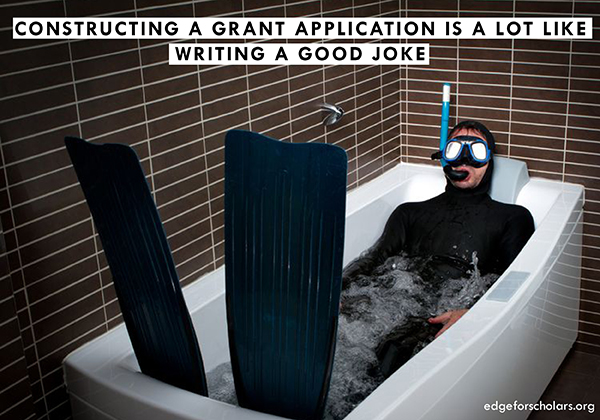The Joke’s on You

What makes a funny joke? What makes a strong grant application? Sometimes, the same things.
In the video below, Jerry Seinfeld describes his joke-writing process and takes the viewer through the evolution of a joke about Pop Tarts. It took two years, and as you can see, many revisions and rewrites to distill the material to a joke that’s funny all the way through.
To write a joke, “you think of something that you think is funny and then go from there.” Likewise, your grant is going nowhere without an idea you think is worthwhile. We all have to shape our ideas to fit reality, just as a good joke needs to be refined from a rambling story to a tight, coherent collection of quips and punchlines. But the idea has to come first.
Specificity is key to the success of a joke. “When I was a kid and they invented the Pop Tart, the back of my head blew right off” is the opening to this one, and Seinfeld points out that “the back of my head,” rather than just “my head,” is what makes it funny. As many of our featured researchers have said, specifics like sample sizes, timelines, and—for you K-writers—the exact nature of those seminars and courses you’re using to get Responsible Conduct of Research credits are vital to good grant-writing.
Humanity was like “chimps playing in the dirt with sticks” prior to the invention of the Pop Tart, continues the joke. “Chimps, dirt, playing, sticks—seven words, and four of them are funny,” Seinfeld says. Every word has to count in a joke. A comedian has seconds to get the audience laughing and keep them laughing; likewise, you have 12 pages to get reviewers interested in your idea and to keep them interested all the way through. There’s no room for extra words.
Grant-writing is no joke. But constructing a grant application has more in common with writing a good joke than you might think.






0 Comments